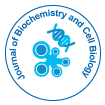Spatial Modeling of Micronekton in Biophysically Characterized Marine Regions
Received Date: Nov 01, 2024 / Published Date: Nov 29, 2024
Abstract
Understanding the distribution and dynamics of micronekton the small to medium-sized marine organisms that play a critical role in oceanic ecosystems requires integrating ecological data with biophysical models. This study presents a spatial modeling approach to analyze the distribution patterns of simulated micronekton across biophysically characterized marine regions. Using environmental variables such as temperature, salinity, currents, and primary productivity, we define biophysical provinces that shape the habitats of micronekton. The model simulates the potential habitat suitability and migratory patterns of these organisms, accounting for both oceanographic conditions and biological interactions. By examining micronekton across different biophysical provinces, we aim to identify key drivers of spatial variability and provide insights into how environmental changes may impact marine food webs. The results highlight significant regional differences in micronekton distributions, with implications for ecosystem management and the effects of climate change on marine biodiversity. This framework offers a comprehensive tool for understanding the dynamics of micronekton populations and their role in the broader marine ecosystem.
Citation: Clara L (2024) Spatial Modeling of Micronekton in BiophysicallyCharacterized Marine Regions. J Biochem Cell Biol, 7: 274.
Copyright: © 2024 Clara L. This is an open-access article distributed under theterms of the Creative Commons Attribution License, which permits unrestricteduse, distribution, and reproduction in any medium, provided the original author andsource are credited.
Share This Article
Recommended Journals
Open Access Journals
Article Usage
- Total views: 246
- [From(publication date): 0-0 - Apr 04, 2025]
- Breakdown by view type
- HTML page views: 93
- PDF downloads: 153
